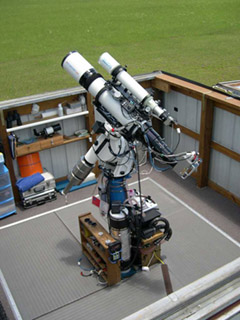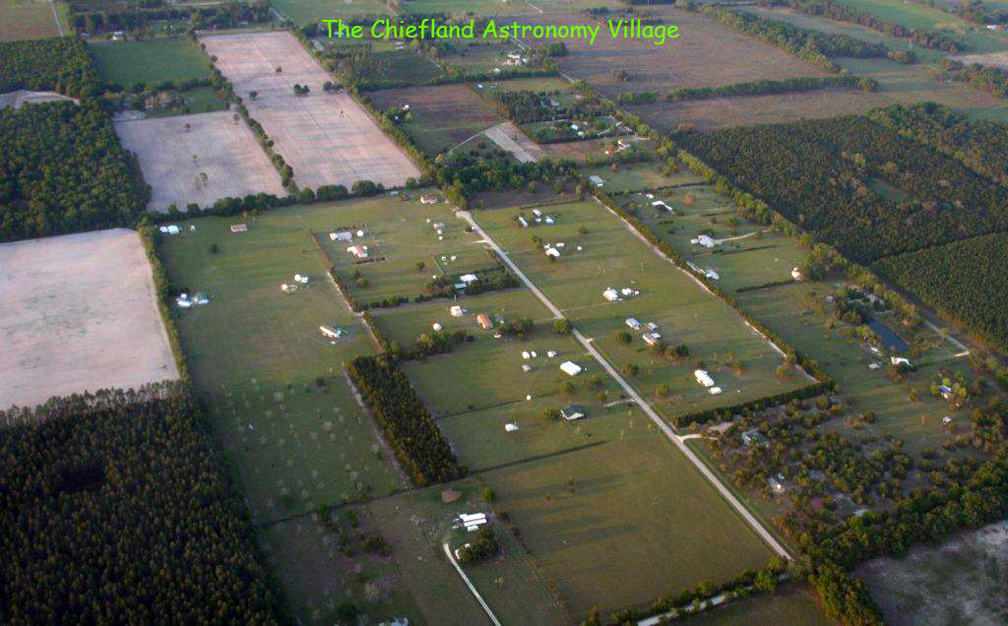
Hi, I'm Joe Mize, I've been and active amateur on and off since 1957. I worked in the Space program from June 1967 until September 2002 building Apollo’s, Skylabs, XB-70, B-1's, then building and later launching NASA's Space Shuttles at KSC. I started my career first with North American Aviation then Rockwell in Los Angeles, I recently retired from United Space Alliance (USA) at KSC.
Upon retiring I moved to my 5 acres in the Chiefland Astronomy Village. Having eyes bigger than my wallet I dreamed of a 20x20ft roll-off roof observatory. One night while in my computer room I thought how nice it would be to have completed my observatory. I’d have computer hookups, a comfortable chair and air conditioning. Then it hit me, I already had all those items, even more already. Thinking about it all I needed one CAT5 communications line coming from my existing pier 150ft into my house’s computer room. I just needed to somehow tie it all together.
Because I’m planing upon getting into CCD, which requires USB, I was stumped until SBIG suggested I investigate ICRON@, which they had tested and approved. The ICRON Extended USB Ranger 410 has four USB 1.1 compatible ports extended via CAT5 cable up to 330ft without speed loss. Simple USB Serial Converter by GoldX@ interfaces with the Ranger for equipment that requires Serial connections like my Astro-Physics AP1200 mount (both Ports), and StarLight Instruments' Digital Micro Focuser attached to the FeatherTouch FTF-3545 Focuser.

Now I could afford to make a smaller, less expensive observatory without the need for a warm room. Having built a very comfortable 12x12 split-roof roll-off observatory at my last home I knew this size met my needs easily. Next, my primary need was my requirement for low walls, ideally only 48” high. Low walls and normal roof trusses do not go together while achieving required clearance for mount and OTA, saying nothing about my 6’4” head height. Levy County’s Building Department suggested I contract an Engineer because of their 128MPH-wind load requirements implemented six months earlier.
|
To give you an idea here are my preliminary
plans which I submitted to the Architectural
Engineer. |
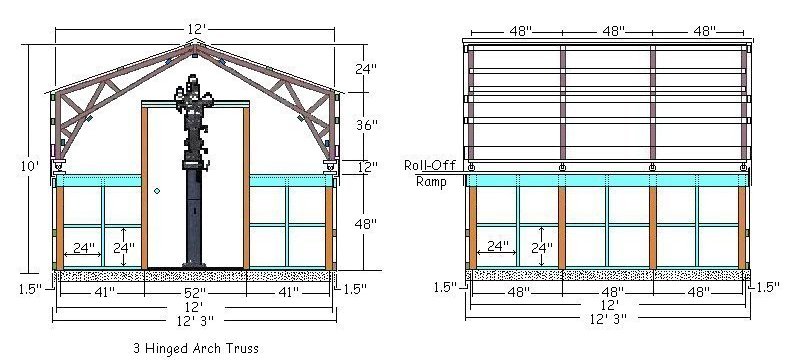
|
|
The Engineer suggested I use 3-Hinge Beams instead of Trusses. I could build the beams myself, they would be stronger, more rigid than trusses and save interior space. A neighbor and I cut 2x12’s, drew the outline on his shop floor and built the four beams one afternoon. I can walk around inside the completed observatory with my arm rubbing the top rail without hitting my head anywhere. |
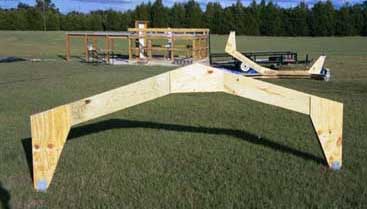 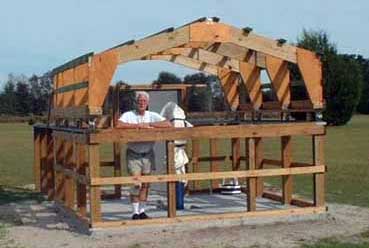
|
|
For the roof rails I chose V-slot casters which keeps the roof from deviating from a straight path or binding as could happen if C-channel were used. Another neighbor welded the angle iron to 3” wide plates, which then were loosely attached to 2x8s on top of the walls. The V-slot casters work perfectly and roll easily. There is more friction on the angle iron than there would be in a C-channel. If needs be I could always jack up the roof and replace the angle iron with a 3” channel. |
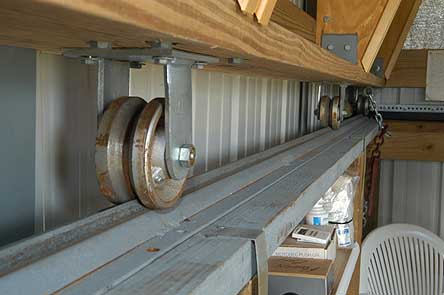
|
|
After applying the metal siding and roof I insulated the roof with Prodex HighR@, a new technology radiant barrier insulation rated at R-14.5 while only being 1/4" thick. HighR is easy to install with its 1" staple strip on both sides of its 48" width. (HighR is similar to, but not the same as 'bubble pack' hot water heater insulation blanket.) Located in Central Florida daily temperatures in mid to high 90s caused the inside temperature to reach 115-120F easily. After installing HighR inside temps are only a couple degrees higher than the ambient outside air temperature, very acceptable. (click image for enlarged view) |
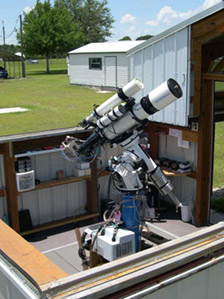
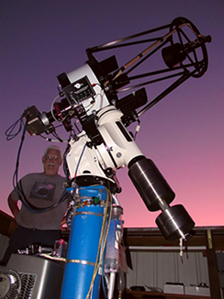
|
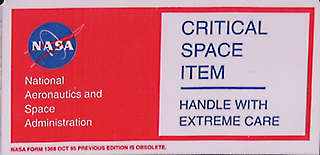
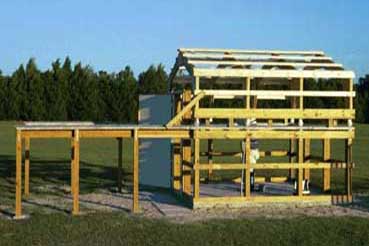
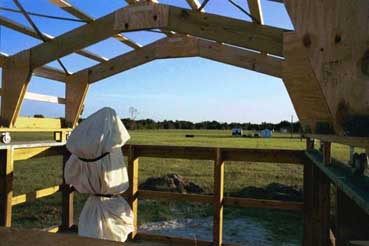
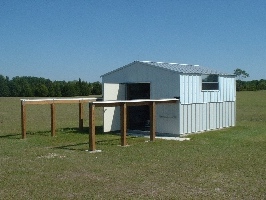
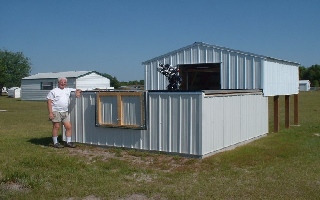
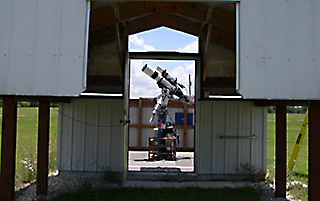
AC wiring, variable 4watt red lights tucked in each corner, shelves, radio, a small desk built into one corner, wall to wall carpeting, and foam rubber foot relief ˝” thick surrounding the pier makes a very enjoyable observing experience. Next, the CCD camera and my dream observatory will be complete.
I would like to take this opportunity to thank my all neighbors for their help, knowledge and encouragement without which I wouldn’t have nearly as nice an observatory. Thkx guys, it was fun.

If you're wondering about my hieroglyphic image and motto,
"May He Go Among The Imperishable Stars"
it's a quotation from a Theban Tomb Text, ca. 18th Dynasty (15th century BCE),
from Thebes, Upper Kingdom, Egypt. Probably Medinet Habu, Mortuary Temple of
Ramesses III. It's part of a prayer chanted while mummies were
transported to their tombs. I think this makes a perfect statement and
"well wish" to everyone into astronomy.
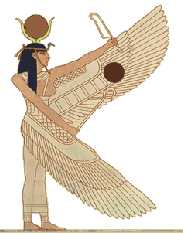
|
"May he go forth on the sunrise boat. May he come to port on the sunset boat. May he go among the imperishable stars. May he sail on the boat of a million years." - Book of 'Going Forth by Daylight'. |
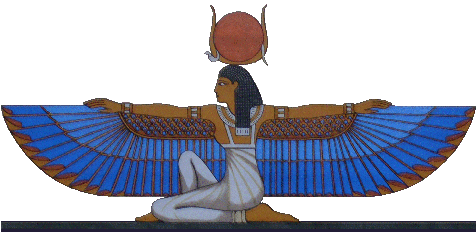
|
